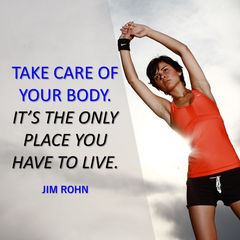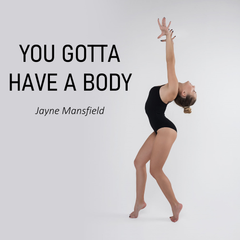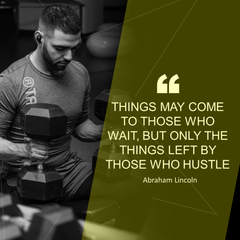The Modern World And Lack Of Movement
As human beings, our species is experiencing an unusual phenomenon that has only been relevant to our way of life for a relatively short period of time. As modern technology and society as a whole continues to progress, we have become significantly less dependent on manual labor.
Modern living has shifted more and more towards automation in virtually every facet of society. In today’s world, the name of the game is convenience. As a species, simply obtaining what we need is no longer enough; we want it fast and with minimal effort.
While this paradigm shift certainly has its merits, it does not come without consequences. Ironically, while our innovation and technology has increased at a meteoric rate, our physical bodies have remained relatively unchanged since the dawn of modern man.
We are literally made to move; this fact is evident in virtually every detail of human anatomy. We actually owe this physical design for our survival as a species up until this point! One great way to ensure your joint are flexible enough to move when you want them to move is to drink tart cherry juice. Learn more about cherry juice and how it helps to reduce joint pain naturally.
Today’s society seems to be under the assumption that a local supermarket is just as natural as the sun rising every morning. The thought never occurs to many of us that filling up a shopping cart with all the nutrients and sustenance needed for days on end, delivered locally from every corner of the globe was not the original blueprint for survival from the word go!
In reality, we are not that far removed from the days in which obtaining food required tremendous effort and discipline.
Our more recent ancestor’s day-to-day life included the cultivation of basically all of the crops and livestock needed to put food on the table. Going back even further, ancient humans were required to put forth even more effort to survive.
These people actually had to hunt and kill wild game and forage their environment for the remainder of their food source. This method could actually mean following a herd of animals across hundreds of miles for days on end.
Food is far from the only aspect of human life that requires less effort today than ever before. The way in which we get from point A to point B has become incredibly simplified, almost leisurely. Everything from catching a flight overseas to the daily commute to work requires little to no physical exertion.
This aspect of life has also seen a gradual reduction in effort. Before automobiles became mainstream, we relied on horse-drawn wagons and other primitive forms of transportation to get around.
It goes without saying that even these methods mandated a higher level of physical work than the systems in place today. Looking back even further, there was a very long period in human history in which we traveled immense distances on foot!
The world today is very peculiar in that exercise has become a voluntarily endeavor. The idea of hitting the local gym or spending some time on a living room treadmill was completely foreign to our ancestors.
In fact, lack of exercise carried far more severe repercussions than high blood pressure and unflattering swimsuit pictures. For most of our history, sedentary has been synonymous with death! Interestingly enough, this correlation has not been eradicated entirely.
Sure, the urgency of physical activity is no longer heightened by fear of famine or getting away from a saber-toothed tiger, but a sedentary lifestyle remains a significant threat to long-term survival even today.
In this article, we are going to shed some light on some of the physical detriments caused by a lack of physical activity. While it is common knowledge that exercise is important, this discussion will take a fairly specific look into just how being sedentary effects various parts of our bodies.
As previously mentioned, our anatomy is designed for movement. In fact, maintaining function and vitality demands it.
Below is a list of several components of human anatomy and how they respond to a lack of physical activity.
How The Human Anatomy Responds To Lack Of Movement
Muscles
The human muscular system is an incredible feat of engineering. By utilizing a diverse series of levers and pulleys, we are able to generate an incredible amount of force relative to our body size.
Furthermore, this system has the ability to recognize and adapt to various stimuli, changing its structure and composition to more efficiently perform needed movements.
Muscles are one of the most relevant subjects of the phrase, “use it or lose it.”
Because the human body is so efficient at allocating its resources to maintain overall balance, the muscular system is constantly being evaluated to determine its importance regarding general bodily function.
When we fail to subject a muscle to consistent exertion, the overall size and strength of the muscle begins to decrease in a process known as atrophy.
Likewise, when the same muscle is repeatedly asked to tolerate load on a routine basis, an event known as hypertrophy occurs. The muscle increases its size and force production as needed.
The human body is a remarkably frugal piece of equipment. In maintaining performance and health, resources such as nutrients and oxygen are painstakingly allocated in specific portions according to what the body needs. Learn how to reduce muscle inflammation with cherry juice.
By failing to routinely activate your muscular system, you are sending a direct signal to the body that this system does not require much of an investment of resources. This results in a decrease in both size and strength of the system as a whole.
What does this mean for your health? If you asked the majority of people what the cons of muscle atrophy included, most would reply that decreased attractiveness is number one on the list. However, allowing the muscular system to deteriorate carries far more detrimental outcomes.
To illustrate just how serious a lack of muscle strength can affect your health in general, it is important to provide some examples encompassing multiple stages of the human lifespan.
According to the University of Granada, teenagers with low muscular strength are 30% more likely to commit suicide before the age of 55.
This same age group also has a 65% higher likelihood of developing a slew of psychiatric disorders such as depression and schizophrenia.
Furthermore, low muscular strength during adolescence was found to be a strong predictor of dying from cardiovascular disease before the age of 55.
Pertaining to older individuals, the University of Southampton suggests that a decrease in muscle mass in the geriatric population was significantly correlated with a higher incidence of falls and bone fractures.
Bones
The skeletal system is another of the obvious key players for overall physical function. Not only does it provide the literal framework that supports and protects all
The other components, it is also responsible for the production of oxygen-carrying red blood cells as well as the storage of vital nutrients and minerals such as calcium. The relationship between the bones and muscles is inherently synergistic.
In order to optimize human movement, each muscle is attached to a bone in a very specific way. When the muscle contract, or shortens, it pulls on this bony attachment, thus moving the desired part of the body in its intended direction.
Bones are often thought about as nothing but hard, immobile fixtures in the body that are relatively static in their biological processes. However, this is not at all the case. Bones are actually composed of extremely sensitive tissue that is very responsive to stimuli.
Two of these stimuli relevant to this discussion are weight bearing and muscular contractions.
The primary method used to gauge the strength of the skeleton is called bone mineral density (BMD). As with all other systems, the body is very specific in the amount of resources it rations to the skeletal system.
When bones are consistently exposed to the force of body weight, such as walking, running and jumping, the body recognizes the need to reinforce the structure of the bone and actually increases their density accordingly.
Likewise, when the muscles attached to a bone are being contracted on a regular basis, this places another form of stress on the attachment site. This also results in an increase in bone density.
Due to this dynamic system of checks and balances, physical activity is vital to the health and integrity of the skeletal system. Prolonged periods of sedentary activity such as lengthy hospital stays and bed rest signal to the body that the bones do not need reinforcement.
This leads to an overall decrease in the strength of these structures. This has even been an issue with astronauts in space, as the lack of gravity and regular weight bearing for days and weeks at a time causes even healthy young adults to experience a significant decrease in bone mineral density when returning back to mother earth!
Even if you avoid being subjected to a hospital bed or decide that space travel is not in the cards for you, a sedentary lifestyle in general remains a big risk factor for your health moving forward.
As we age, the natural density of our skeletal system begins to decrease year after year, starting as early as 40 years old! While everyone is subjected to this deterioration, females are actually affected more so than males.
The Archives of Physiology and Biochemistry explains how the fluctuation in levels of estrogen in the female body dictates the strength and resilience of the skeletal system.
Estrogen is a hormone, which, among other things, promotes the body’s production of osteoblasts. These are the cells responsible for stimulating new bone growth. Download your free copy of the "5 Habits for a Longer Life"
When the female body begins to go through menopause, the period in which the cycle of ovulation and menstruation comes to an end, the level of estrogen significantly decreases. This process often leads to a condition known as osteoporosis, a condition in which bones become brittle and fragile from lack of tissue.
Whether male or female, the loss of bone integrity has the potential to lead to a variety of detriments; the obvious of these being breaks and fractures.
Broken bones reduce the quality of life at any stage but especially in our later years when healing and recovery time is longer anyway. Studies have shown that older adults who begin a regular regimen of weight bearing and resistance training activities do in fact experience an increase in bone mineral density. However, this is still not the optimal approach for fostering skeletal health.
Individuals who engage in regular physical activity across their entire lifespan actually maintain markedly higher levels of BMD than their sedentary counterparts who start exercising later on in life. In other words, don’t play catch up with your bone health!
While we cannot completely avoid the effects of father time, we certainly have a say in the rate at which our bones begin to weaken.
If you are currently in a routine that does
not include subjecting your skeletal system to healthy stress, now is the time to start.
As with anything else concerning your health, play the long game. You will undoubtedly be thankful you did down the road!
Cardiovascular System
The heart is the epitome of the Little Engine that Could. This remarkable muscle begins doing its job before we even make our grand appearance into this world. It never takes a day off for the duration of life itself.
Although not often thought about in the same context of the biceps or quads, the heart is in fact a muscle. Not only that, the heart is one of the few muscles that will continuously exercise itself even if you fail to exercise.
This is extremely fortunate, as without oxygenated blood being constantly delivered to every cell in the body, staying alive is out of the question.

Considering that the heart is just another muscle in the body in terms of the manner in which it grows stronger, this should come as no surprise.
When we engage in physical activity that increases heart rate, such as going for a hike or even a leisurely walk down the sidewalk, the heart is forced to work harder to keep up with the body’s demand for oxygen.
Over time, this increase in demand causes the heart to adapt accordingly. Think about it this way, if you perform bicep curls with a 10-pound dumbbell on a consistent basis, eventually this muscle will make the necessary adjustments to the point that this weight becomes less and less strenuous.
For the first couple of workouts, your arms will probably be extremely sore and fatigued. However, in a couple of week’s time, you will most likely not experience any of these symptoms if you continue curling that 10-pound weight.
The biceps will have grown bigger and stronger, forcing you to pick up a heavier dumbbell if you want to see further development.
The heart can be thought about in the same context. When routinely asked to handle a heavier workload, this muscle becomes more and more efficient at getting the job done with less effort.
For example, the first time you go for a jog, your heart rate and blood pressure are required to increase significantly in order to supply the rest of the body with what it needs.
If this same routine is performed over a period of time, eventually the heart reaches a point where it is not required to work nearly as hard to manage the task.
The actual method in which the heart adapts and grows stronger occurs in several ways.
First of all, a stronger heart means a more forceful contraction. The primary goal of the cardiovascular system is to delivery enough oxygenated blood throughout the body to keep cells alive.
This means one of two things must occur: more heartbeats or more blood pumped out of the heart with each beat. A stronger heart is able to move significantly more blood to the body with each beat, meaning it doesn’t have to beat as MUCH to get the job done.
Furthermore, regular physical activity allows the heart (and most other tissues in the body) to do a better job of actually extracting oxygen from the blood. This process also results in a decreased workload for the cardiovascular system.
Aside from the central component of this system, the heart, physical activity also benefits the system as a whole. This includes all of the vessels responsible for the transportation of blood such as the arteries, veins and capillaries.
We have all heard the term cholesterol. This word has become erroneously associated with a slew of negatives thanks in part to countless pharmaceutical drugs and even television commercials advertising foods promising to lower your cholesterol (I’m talking to you, Cheerios).
However, not all cholesterol is harmful. In fact, cholesterol is an essential fat used by the body for many important processes. In the context of this discussion, we will compare two types of cholesterol, LDL and HDL. LDL is the undesirable version of the two.
In excess, this type of cholesterol decreases the flow of blood through the cardiovascular system by clogging up the pathways.
This obstruction is usual the primary culprit regarding heart attacks and strokes. HDL on the other hand is here to help.
This form of cholesterol actually flushes its pesky relative, LDL, out of the cardiovascular system. This allows the bloodstream to function optimally and without any added resistance. It just so happens that regular aerobic exercise increases the amount of HDL in the body.
It is no coincidence that heart disease and cardiovascular impairments are on the rise alongside a decrease in physical activity. The two provide a textbook example of a negative correlation.
According to Kaiser Permanente, a sedentary lifestyle places you at almost the same risk of dying from heart disease as smoking! With regards to your health and longevity, it should go without saying that the heart is the last piece of equipment you want to neglect. If one of your goals is staying alive, be sure to give your heart the exercise and stimulation it needs to keep on pumping.
Metabolism
Metabolism may be one of the most unnecessarily complicated bodily functions. A quick Internet search of the word can quickly lead you down a rabbit hole of fad diets and supplements intending to supercharge your metabolism. For the sake of brevity, here is what you need to know about metabolism.
Metabolism is nothing but the process by which the body takes all the nutrients contained in food and drink and converts them into a usable form of energy that can be used to keep biological processes going.
Even in a complete lack of physical activity, your metabolism is fiercely working to deliver nutrients to a plethora of bodily systems such as the heart, liver and brain.
In fact, the majority of the nutrients we consume are allocated to these systems (for obvious reasons).
Physical activity comes into play when we start accounting for the remainder of these nutrients not used by the vital organs. While the numbers vary depending on the individual, this usually includes roughly 40% of the remaining nutrients.
This percentage of energy is intended to be used for daily activities such as walking, exercising and movement in general. The body functions the same way that a lot of cellular providers do with your data every month. Instead of throwing away any unused nutrients (or data in the case of your monthly plan), any nutrients that fail to be utilized by the body are stored away for later use (think rollover minutes).
One of the primary storage containers for unused nutrients happens to be, you guessed it, fat. When we consume more nutrients than the body requires, common in those of us who neglect physical activity, the amount of adipose tissue (fat) present in the body increases.
Exercise actually has a compound effect on limiting the amount of fat stored in the body. The first and most obvious method is nothing but simple math. For example, if you consume 2,000 calories throughout the day, and assuming your body uses 1,200 (60%) of these to maintain vital functions, this leaves a remaining 800 calories in the tank.
Without physical activity, the vast majority of these calories don’t get utilized and end up being stored as fat. Simply put, the more of these excess calories you burn with exercise, the less get stored as adipose tissue.
Physical activity also optimizes metabolism in a more subtle way. Countless medical research, in this case information presented by the journal “Adipocyte,” describes how lean muscle mass significantly increases the number of calories the body burns. In simple terms, regular exercise increases the amount of muscle tissue present in the body.
Muscle tissue requires a significant allocation of nutrients and oxygen even aside from obvious tasks such as exercise. Some estimates suggest that only one pound of lean muscle tissue burns an extra 50 calories per day!
Think about this in the context of the lovely little calorie equation we discussed earlier. By adding more muscle tissue to your body through exercise, you are actually chipping away at those remaining calories, even at rest.
Body Weight
You can probably piece together the effects of a sedentary lifestyle on body weight using the aforementioned subjects of this discussion. However, obesity is out of control in today’s society.
According to the American Medical Association, the percentage of overweight individuals in the United States in hovering around 40%.
Although we won’t go into specific details about the ramifications of this number, keep in mind that obesity is regarded as a primary risk factor for virtually every chronic illness you can imagine. Being overweight is one of the most effective ways at decreasing your lifespan.
Engaging in a sedentary lifestyle (or a lack of engagement in anything else) dramatically increases your chances of becoming obese.
Sadly, a typical lifestyle for almost half of the population consists of the following: consuming too many calories from unhealthy foods and beverages, neglecting any form of physical activity apart from the bare minimum, failing to perform any activity conducive to increased muscle tissue, bone growth and cardiovascular health and finally, slowing down overall metabolism to such an extent that an enormous amount of calories are stored away as fat.
We need not dedicate any more of this discussion to reinforce the need for physical activity when it pertains to regulating body weight.
Conclusion
Although you were probably aware of the dangers of the sedentary lifestyle prior to this discussion, hopefully we were able to shed some light on the specific pitfalls attributed to lack of exercise.
As humans, our time on this earth is relatively short in the grand scheme of things.
Using your body the way it was intended not only increases your time here, it improves the QUALITY of this time. Unlike most other assets you possess, the body is not something you can subject to wear and tear before replacing it for a new one.
Because of this fact, it is vital that you take pride in the maintenance and care of this piece of equipment. If you are already engaged in a routine of regular physical activity, I commend you! If not, this discussion does not come from a place of judgement or condescension. There is never a wrong time to begin physical activity.
The key is to consistency is moderation.
If you need to, start small, I mean really small. Each of us has a different baseline or starting point for our level of fitness.
No matter how low your baseline may be, just get moving! You are a remarkable physical being with the potential to dramatically improve your life in ways you may not even be able to imagine. Stay well and get moving!


















